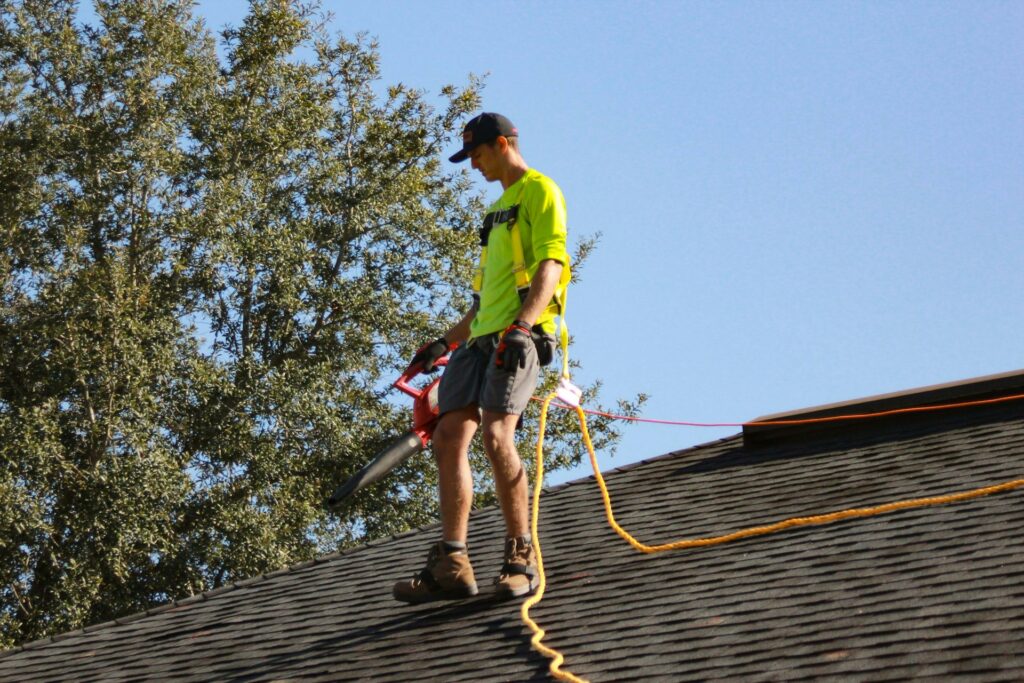Dealing with a damaged roof can be overwhelming, especially when it’s hit by strong winds. In Kingston and the surrounding areas, unpredictable storms can leave roofs vulnerable, leading to various problems that require immediate attention. Understanding how to respond to wind damage is key to keeping your home safe and avoiding more significant issues down the road.
Wind can lift shingles and loosen flashing, often causing leaks and water damage. Addressing these problems quickly can help prevent costly repairs and further damage to the structure of your home. If you find yourself dealing with roof damage, here are a few steps to consider that can make the process smoother and more manageable.
Assess the Damage
After a storm rolls through, it’s time to assess your roof. Safety comes first, so be cautious when inspecting your roof for damage. Here are some simple steps to safely check for wind damage:
- Stay grounded: Look for visible signs of damage from the ground using binoculars if necessary. Keep an eye out for missing shingles, and check if there are any pieces lying in your yard.
- Examine the attic: Check your attic for any signs of leaks. Water stains or wet spots can indicate roof damage.
- Look for debris: Fallen branches or other debris on your roof can cause additional harm, so note any objects that need removal.
Common signs of wind damage include shingles that have curled, slipped, or are missing entirely. Check the area around your chimney and ventilation pipes for any loose flashing. If you’re unsure or unable to access your roof safely, contacting a professional might be the best option. They can provide a thorough inspection and identify damage that might not be apparent from the ground.
Temporary Fixes
After inspecting the damage, temporary measures can help protect your home until professional repairs are possible. Acting promptly is key to preventing additional problems, such as water seeping through exposed areas. Here’s how you can secure your roof temporarily:
- Cover exposed spots with tarps. Secure the tarps firmly, ensuring they don’t get blown away by wind or rain.
- Use roofing cement or a sealant to cover exposed nail heads or small holes, preventing water from entering.
- If shingles are curling upward, gently bend them back into place; this isn’t a permanent solution, but it can help reduce water intrusion until a professional takes over.
These temporary fixes can give you some breathing space while ensuring your home remains as safe as possible from further damage.
Contact a Professional
Once you’ve managed the immediate risks, reaching out to a professional roofer is the smart next step. Skilled roofers can conduct a detailed inspection and make comprehensive repairs to restore your roof’s integrity. Here’s why you should consider hiring licensed professionals:
- They possess the knowledge to identify less obvious issues, such as structural damage or weakened areas, which might be missed during a casual inspection.
- Licensed roofers have access to high-quality materials necessary for long-lasting repairs.
- When you work with experienced roofers, you benefit from their expertise and efficiency, ensuring your roof is repaired correctly and enduringly.
It’s important to have professionals handle significant tasks to ensure the job is done right and to avoid risks associated with DIY efforts. Even minor repairs should be inspected by an expert whenever possible.
Filing an Insurance Claim
Damage from powerful winds often means an insurance claim might cover repair costs. The process involves a few crucial steps to help you navigate your way through it:
- Document all visible damage comprehensively with clear photos and detailed notes. This documentation helps you communicate effectively with your insurer.
- Review your insurance policy to understand coverage for wind damage and the requirements for claims.
- Contact your insurance company promptly to open a claim and inform them about the extent of the damage based on your documentation.
An adjuster from the insurance company usually assesses the damage to estimate repair costs. Being prepared with thorough documentation eases this process and helps secure appropriate coverage for the required repairs.
Preventative Measures
Strengthening your roof against future wind damage is crucial. Regular maintenance can keep your roof in good condition and reduce vulnerabilities. Here are some preventative measures:
- Schedule regular inspections to detect any potential issues early on.
- Keep trees trimmed to minimize the risk of falling branches during storms.
- Consider reinforcing shingles and adding extra fasteners for more stability.
Ensuring Roof Longevity Post-Repair
After completing repairs, maintaining your roof’s health is vital. Here are some steps to ensure longevity:
- Regularly clean gutters to prevent water backup and potential leaks.
- Schedule inspections after a severe storm to catch any new damage early.
- Replace any damaged areas promptly to prevent further issues.
Your Action Plan for Wind-Damaged Roof Repair
Dealing with wind damage on your roof requires swift action and a thoughtful approach. Quick responses help safeguard your home’s integrity, reduce potential risks, and control the scope of necessary repairs. After completing repairs, remain vigilant by keeping up with regular maintenance and inspections to guard against future weather events. Investing in quality repairs will not only address current issues but also add longevity to your roof, minimizing long-term expenses and enhancing your home’s overall safety.
If you’re ready to move forward with fixing wind damage, ensure your roof is in top condition by seeking professional guidance for your roof repair in Kingston. Full House Roofing offers comprehensive services to restore your roof’s strength and protect your home from future storms. Let our experienced team help you navigate through the repair process and secure your property for peace of mind.

